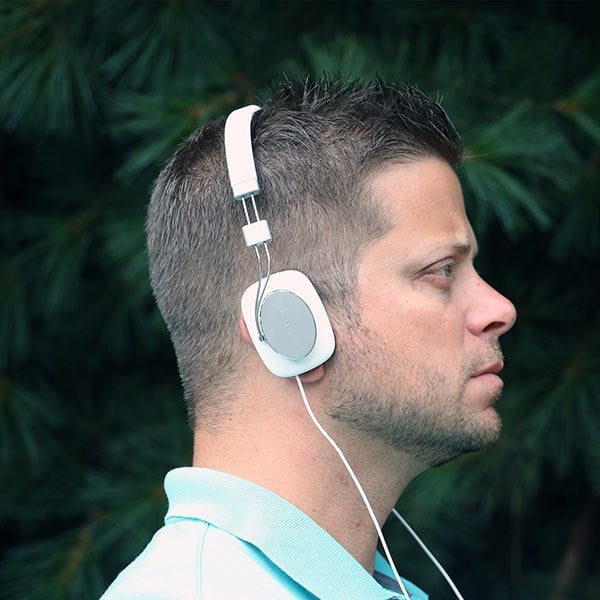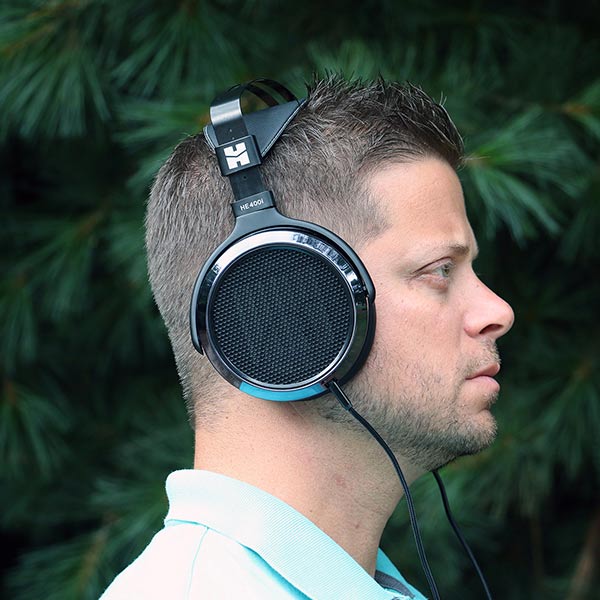What are the Best Earphones? In-Ear vs. On-Ear vs. Over-Ear




Over the past several years, headphones have gone from the red-headed stepchild of the audio world to a must-have fashion accessory. Today, there is a wider selection of earphones than ever before.
When shopping for a new pair of earphones, the first thing you should determine is whether you are looking for in-ear headphones, on-ear headphones, or over-ear headphones. Each has their advantages and disadvantages.
At Audio Advice, we think there is a time and place for each of these types of earphones. Let’s take a look at each style and talk about how they perform in three primary areas -- portability, comfort, and performance.



Sometimes called earphones or “earbuds”, in-ear headphones are perhaps the most common type of headphone today. The white “earpods” that come in the box with every new iPhone have made them a must-have accessory. On their way out the door to class, the average college student likely makes sure they have their keys, wallet, cell phone, and earbuds.
Due to their small size, in-ear headphones rate the highest when it comes to portability. Some come with a travel case, but for many people, it’s as simple as wrapping the cord around their fingers a few times and tossing them in their bag or pocket.
Tangling can be an issue, however, so look for in-ear headphones that come with tangle-free cords.
Most in-ear headphones fit just inside the opening of your ear canal, creating a nice seal. Others are held on with small pieces that wrap around the back of your ears. How comfortable they are really depends on your personal preference and how you will be using the headphones.
To some, in-ear headphones are extremely comfortable, while to others they can be annoying and sometimes even painful. We recommend considering in-ear headphones that utilize memory foam or Comply ear-tips, rather than hard plastic or silicon. If you do purchase a pair that comes with silicon tips, however, they usually come with a few different sizes. Finding the right size for you will be key to a comfortable fit. Either way, in-ear headphones are not ideal for hours-long listening sessions.
If you’re trying to listen to music while jogging or working out, in-ear headphones are your best bet. Most will stay snug in your ears without falling out, and you won’t have to contend with sweat from leather-wrapped earcups.
Because in-ear headphones are so prevalent today, it can be really difficult to judge the entire category on sound-quality. You can find a pair of cheap, multi-colored, plastic earbuds at the local drug store, or you can purchase high-performance in-ear headphones from companies like Audeze, Astell&Kern, and Klipsch.
One thing that most in-ears have going for them is that they create a nice seal inside your ear canal, helping to isolate you from the outside world.
In-ear headphones have small drivers, so most can’t produce the types of highs and lows that on-ear or over-ear headphones can. They also pump the music straight into your ear-drum, so they’re less spacious or “open” sounding than other types of headphones.
Of course, there are exceptions. The Audeze iSINE, for example, utilize a planar magnetic design, unlike anything we’ve seen in any other in-ear headphones.
This type of headphone sits directly against your ears. If we’re being honest, they don’t really have any unique advantages over in-ear or over-ear headphones. On-ear headphones are more about balancing your needs and finding a happy medium between the portability of in-ears and the sound quality over over-ears.
Most on-ear headphones are made with travel in mind. The earcups are smaller than you will find on over-ear headphones. Many even fold up for easy transport. Of course, if you get a nice pair, you’ll want to find some that come with a hard-shell case to prevent damaging them when you throw them in your bag.
Again, this is a matter of personal preference. On-ear headphones don’t typically get as hot as over-ears can, and they don’t sit inside your ear canal, which bothers some people. On the other hand, some people are more sensitive, and on-ear headphones can sometimes lead to soreness from the constant contact with your ears.
On-ear headphones can’t create a seal the way in-ear and over-ear headphones do, so they usually leave a little to be desired when it comes to noise isolation.
The quality of the sound itself really depends more on the product itself than the type of headphone, but on-ear headphones have larger drivers than in-ears, meaning that in the same quality and price range, they can typically reproduce a wider range of frequencies.
While in-ear and on-ear headphones have their place, if you ask a typical audio enthusiast about their favorite pair of headphones, you can likely bet they’ll be a pair of over-ear headphones.
They’re big and clunky -- meant to be worn at home or at work, not on-the-go, but most of the best-sounding and most comfortable headphones are over-ears.
While some over-ear headphones can be folded up and even come with a travel case, this is not their strong suit. Of all the types of headphones we’re discussing today, over-ear headphones are the largest and least portable.
Instead of going on a trip and bringing them along, over-ear headphones can transport you right from your desk or couch.
Wearing a pair of comfortable over-ear headphones is like snuggling up with a warm blanket. The oversized ear cups cover your ear entirely, so you don’t have to worry about your ears getting sore. Some higher-end over-ear headphones can get pretty heavy, however, so be sure to look for a pair that has a padded headband, comfortable pads on the earcups, and doesn’t make you sweat.
Some higher-end over-ear headphones can get pretty heavy due to their high-quality materials and internal components. Be sure to look for a pair that has a padded headband, and comfortable ear cups. The thing to look out for here is whether or not they make you sweat during long listening sessions.
Because they have the largest drivers, high-end over-ear headphones can usually reproduce the widest range of frequencies, from silky smooth highs to tight, deep bass. By enclosing your ears completely inside the earcups, over-ear headphones are able to provide good isolation while still allowing a wide sound stage.
From a sound perspective, all of the very best headphones in the world are over-ear headphones.
Of course, you can purchase inexpensive versions of any of these types of headphones for $10 that won’t sound as good as other types from better manufacturers. Understanding the general differences between in-ear, on-ear, and over-ear headphones is just the first step when it comes to headphone shopping.
Doing research to understand the brand reputation, build-quality, features, and sound quality of the specific models of headphones you’re considering will help you make the right decision. If you need help, we have a Headphone Buyers Guide and plenty of headphone reviews to get you started.
At AudioAdvice.com, we curate our entire selection of products, so you can rest assured that if we carry it, it’s a good product. If you would like some help determining which is the perfect headphone for you, just click the chat icon at the bottom of the screen and one of our experts will be happy to help!
You'll be among the first to know about product launches, exclusive online deals, and the hottest audio trends.
